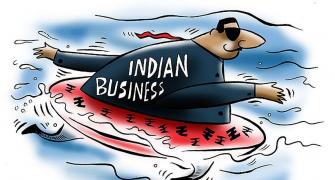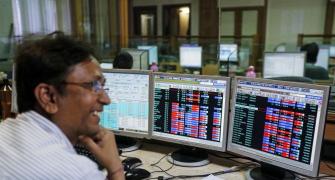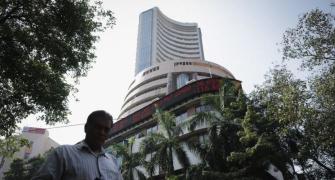 Reserve Bank of India Governor D Subbarao has said India, being a current account-deficit country, is more vulnerable to sudden reversals in capital flows and short-term overseas portfolio money than nations which have a current account surplus.
Reserve Bank of India Governor D Subbarao has said India, being a current account-deficit country, is more vulnerable to sudden reversals in capital flows and short-term overseas portfolio money than nations which have a current account surplus.
Also, in an oblique reference to threat to Indian exports from countries like China, whose currency is pegged to the US dollar, he said India, with a flexible exchange rate, might be at an disadvantage compared to trading partners or competitors for the same export markets that had a fixed exchange rate regime.
Addressing a seminar on International Monetary System in Zurich on Tuesday, Subbarao said a distinction should be made between nations whose reserves were the outcome of current account surpluses and those with current account deficits whose reserves were a result of capital inflows. Such inflows might be in excess of their economies' absorptive capacity, he said.
|
STATE OF FOREX AFFAIRS | ||||
|
|
2006-07 |
'07-08 |
'08-09 |
'09-10 |
|
CAD* |
1.0 |
1.3 |
2.4 |
2.5 |
|
Net Capital flows* |
4.8 |
8.7 |
0.6 |
3.8 |
|
Capital flows in |
37 |
92 |
(-)20 |
14 |
|
Rupee vs dollar |
2.3 |
9 |
(-)21.5 |
12.9 |
|
CAD: Current account deficit *in % of GDP Source: RBI | ||||
"Our (India's) reserves comprise essentially borrowed resources and we are, therefore, more vulnerable to sudden stops and reversals compared with countries with current account surpluses," he said.
India's foreign exchange reserves stood at $279.63 billion at the end of April 2010. After the recent financial meltdown peaked in 2008, there was much discussion over the cost-effectiveness of self-insurance from foreign exchange reserves.
India has experienced both 'floods' and 'sudden stops' of capital flows. Net capital flows to India increased from $7 billion in 1990-91 to $45 billion in 2006-07 and, further, to $107 billion during 2007-08 the year just before the global financial crisis.
The inflows then dropped to as low as $7 billion in 2008-09, when the crisis was at its most intense around the world. Since then, capital flows are estimated to have recovered to around $50 billion in 2009-10.
Referring to the nature of capital flows, Subbarao said, among the components of capital flows, India preferred long-term flows to short-term ones and non-debt flows to debt flows.
India's policy on equity flows has been quite liberal and stable, in sharp contrast to other emerging market countries, which liberalised and then reversed the process when flows became volatile. India would continue to move towards liberalising its capital account, but it would revisit the roadmap to reflect the lessons of the crisis, he said.
"Our exchange rate policy is not guided by a fixed or a pre-announced target or band. Our policy has been to intervene in the market to manage excessive volatility and disruptions to the macroeconomic situation," said the RBI governor.
The country's exchange rate policy is said to have imposed some costs. Last fiscal (2009-10), the rupee appreciated 13 per cent in nominal terms but by as much as 19 per cent in real terms because of the inflation differential between India and trading partners. "This has implications for our external competitiveness at a time when world trade is recovering and concerns about protectionism are resurfacing," Subbarao said.
On a Tobin-type tax (imposing a cess on hot money), the RBI governor said: "We have not so far imposed nor are we contemplating one. However, it needs reiterating that no policy instrument is clearly off the table and our choice of instruments will be determined by the context."








